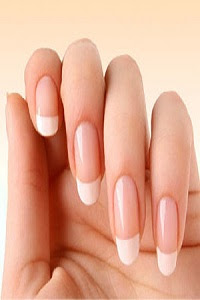What Dermatologists Say About Your Nails Health?
Believe it or not, the condition of our fingernails and toes may occasionally provide information about our general health. Certain nail irregularities can indicate dietary inadequacies, arthritis, heart disease, and other conditions. Doctors and dermatologists are qualified to closely study nails for these indications to conduct additional tests and provide an accurate diagnosis.
Of course, you must also keep an eye on the state of your
nails. And to do so, you must be able to recognize when anything is out of the
norm.
When must I make an appointment with a dermatologist to discuss my nails?
If left untreated, nail disease can be challenging to treat.
Early detection and treatment yield the most outstanding results. If you
observe any unexpected or uncomfortable changes in your nails, consult the Best dermatologist in Dubai for an
assessment and, if required, therapy.
A dermatologist is an expert in the diagnosis and medical,
surgical, and cosmetic treatment of skin, hair, and nail problems.
Let's go through six nail irregularities that you and the
dermatologist should be on the lookout for so you will get the care you want.
1. Nails that are discolored
Healthy fingernails are often pinkish-beige in hue. Any
variation in this color, whether yellow, blue, violet, or white, might indicate
various health conditions. Your dermatologist will examine your fingernail
discoloration and rule out any underlying issues. If the discoloration is
yellow, it might be caused by a fungal infection, eczema, diabetes, or thyroid
problems. Blue nails are frequently associated with poor circulation and low
oxygen levels. Similarly, pale, white nails may indicate anemia, liver and
heart illness, or insufficient nutrition.
2. Bumpy Nails
Regular nails have a smooth texture to them. On the other
hand, Bumpy nails are commonly associated with an inflammatory disorder such as
psoriasis or arthritis. These bumps might vary in number and size. They may
seem like a jumble of slight indentation or projecting dots or lines. In any
case, they will see and feel harsh.
3. Split Nails
Nails in excellent health have a uniform color and texture
and are also firm. Of course, fingernails and toenails are not indestructible,
but they should be able to endure even little physical stress. If your nails
break or split apart with little to no effort, your body may be deficient in
some essential nutrients. Splitting nails might also indicate a thyroid issue
or a fungal infection. In any event, weak nails are a red flag that doctors and
dermatologists take carefully.
4. Misaligned Nails
When the body is in good health, your nails should keep the
same relative form and level plane. Indented or "spoon nails"
(koilonychia) might suggest significant health issues such as anemia, lupus
erythematosus, heart disease, hemochromatosis, Raynaud's illness, and others.
On the other hand, round or "clubbed" nails can indicate liver
disease, cardiovascular disease, lung sickness, or even AIDS.
5. Inflamed Nails or Nailbeds
Most people have irritated nailbeds regularly. When the skin
around your nail becomes inflamed somehow, this might cause nail issues. The
problem might be as simple as a hangnail or a mild illness. On the other hand,
swollen nails might indicate more significant issues relating to
connective-tissue disorders (e.g., lupus). Your dermatologist can assess the
severity of the edoema and if additional treatment is necessary.
6. Beau's lines
If your nails have an indented-like horizontal line, it might
indicate that you have had a significant sickness or that you have had an
accident or shock to your system, which has caused the nails to cease growing
temporarily. Beau's lines may potentially be a sign of uncontrolled diabetes,
cancer therapy, or exposure to cold temperatures in persons with Raynaud's
illness, a rare blood vessel ailment.
Some patients have identified Beau's lines as being related
to COVID-19, but doctors warn this is not a frequent sign of a coronavirus
infection and should not be used to assess whether or not you have the illness.
7. Melanoma
Contact your doctor if you observe a dark-colored stripe
along the length of your nail. Melanoma, the worst type of skin cancer, might
be the culprit. Melanomas can form on or around the fingernail, albeit uncommon
(so be sure to check the skin around your nail, too). And, unlike heart
illness, renal problems, and other ailments, melanoma doesn't usually show
additional visible symptoms, according to Flowers – the color of your nail
might be your only sign. So, if you notice a single new band on a nail, you
should consult a dermatologist right once.
Conclusion
Aside from when we trim, file, polish or paint our nails, we
may not give them much thought. However, it turns out that those challenging
small keratin-rich characteristics might help us maintain our health. So, keep
a watch on your fingernails and toes and seek medical assistance if you see
anything unusual.




Comments
Post a Comment